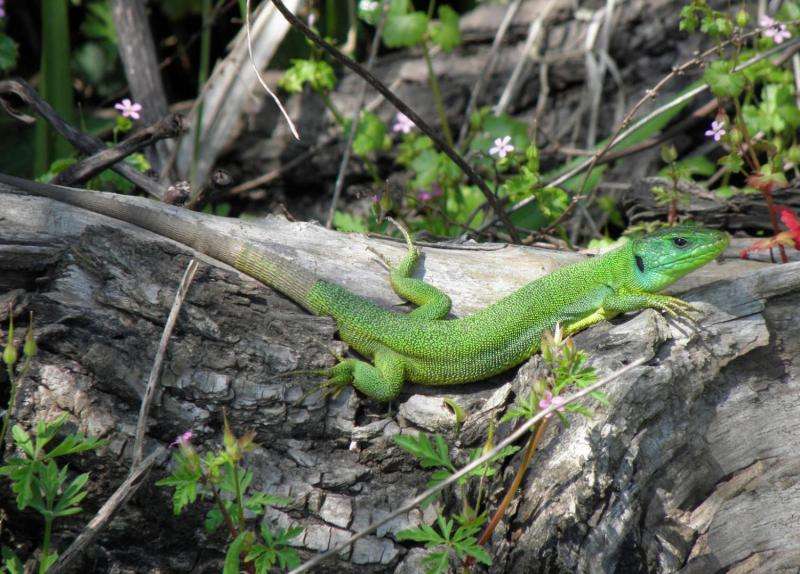Lizards can stomach island living

Life on an island isn't always easy. To make the most of the little there is to eat on many Greek islands, the digestive system of Balkan green lizards has evolved considerably compared to family members on the mainland. Surprisingly, many of these insect-eating lizards even have special valves that help to digest plants. These are some of the findings from a study led by Konstantinos Sagonas of the National and Kapodistrian University of Athens in Greece, published in Springer's journal The Science of Nature.
Reptiles can adjust their digestive system and food preferences due to adverse circumstances such as low rainfall and poor food supply. Previous studies, for instance, show that insect-eating Balkan green lizards (Lacerta trilineata) surviving in the harsh environments of various Greek islands have broadened their diet to include more plants. To extend this research, Sagonas' team set out to compare groups of these lizards on the islands of Andros and Skyros with two other populations in mainland Greece.
They found that the island lizards have a longer small intestine and hindgut compared to their mainland counterparts. Those collected from the island of Skyros also have longer stomachs. When the animals were dissected, the researchers made an unusual discovery. Cecal valves, which slow down food passage and provide fermenting chambers, were found in 62 percent of the island-dwelling lizards, compared to 19 percent of the mainland ones. This was a fact not previously known for green lizards.
Cecal valves are typically found in plant-eating lizards, and host micro-organisms that help to ferment and break down plant material into fatty acids. When these structures do occur in insect-eating lizards, it is generally among populations that have started to eat a varied diet that also includes plants. Sagonas believes the presence of cecal valves among the island lizards therefore reflects their higher consumption of plant material. About 30 percent of their diet consists of plant material, compared to the 10 percent of the mainland reptiles.
Their evolved digestive system therefore makes it possible for island lizards to eat more plants. Because of their longer digestive tract and the presence of cecal valves, it takes up to 26 percent longer for the food of island lizards to pass through their digestive system. In a process which is more common to plant-eating lizards, the ingested food is ultimately exposed far longer to digestive enzymes.
"Such adaptations allow insular populations to take advantage of the limited food resources of the islands and, eventually, overcome food dearth," explains Sagonas. "Energy flow in insular environments, the digestive performance of insular populations and the connections within them, provide insights into how animals are able to colonize islands and maintain viable populations."
More information: Sagonas, K. et al (2015). Effects of insularity on digestion: living on islands induces shifts in physiological and morphological traits in island reptiles, The Science of Nature. DOI: 10.1007/s00114-015-1301-8
Provided by Springer




















